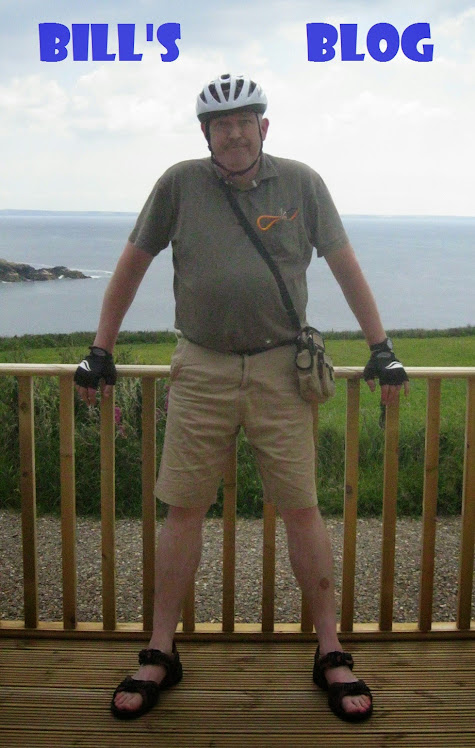
The sunny weather this weekend gets me out into the remotest parts of North Pembrokeshire to track down one stage of the curious journey taken by St Teilo from his birth in the 6th Century to the present day. This spooky tale puts Dan Brown's clumsy fiction about the Holy Grail into the shade and has the bonus of being true.
Teilo, born in Pembrokeshire and a first cousin of St David, is well-known as the founder of Llandaff Cathedral and the patron of churches around Wales (notably Llandeilo, Carmarthenshire) and Brittany. On his death his body miraculously cloned itself into three in order to satisfy the clamour from various churches for a reliquary souvenir (well, that bit might not be true I suppose) and for many years his skull was venerated in Llandaff itself until 1450 when piratical raids from Bristol necessitated its removal by the Mathew/Melchior family, its hereditary guardians, to the Preseli mountains which is where I take up the chase.
Sadly the church of St Teilo up the road from Maenclochog is now a total ruin having been abandoned in the mid 19th century - we find brambles with a few grave-stones peeping out - but the farm where the skull was kept by the Melchior family is still
 there as is the holy spring (picture) whose waters, if drunk from the holy man's cranium, would cure chest complaints.
there as is the holy spring (picture) whose waters, if drunk from the holy man's cranium, would cure chest complaints.So what happened to the skull? It was still being used by pilgrims to the spring up to at least 1947, rather discreetly as this sort of thing wasn't approved of by the low Anglican Church and even lower Nonconformists who predominate round here (had this been RC Brittany there would have been a Rococo shrine, plastic bottles of water in the shape of Teilo, etc). But then it vanished and the handful of interested parties - local historians and superstitious people with bad chests - lost touch for several years.
However, I can report that the saint's already well-travelled coconut turned up again in the 1990s, having emigrated with the Melchior family to Australia for a while and then returned, and is now back in Llandaff Cathedral after over 500 years.
Needless to say some New Age cranks have asserted that a pre-Christian, hereditary priesthood of skull-worshippers are at work (a laughable scenario considering the Melchior family themselves - presumably the candidates for the mysterious priesthood - became Nonconformists many years ago) but actually I think that the true story is quite sufficiently intriguing. Google time yesterday evening shows that the leading expert on the skull story was amateur antiquarian the late Colonel Kemmis Buckley (of the brewery family), a colourful personality whom I met a few times in the early eighties to discuss the Dyfed Best Kept Village Competition, an annual bureaucratic nightmare for which I then had responsibility (running Hafal is a stroll in the park by comparison).
Meanwhile I track down two early 6th Century inscriptions from the ruins of St Teilo's. They were removed in 1959 to Maenclochog Church (key from the shop - it's locked because elf'n'safety have condemned the main door/bell-tower so everybody has to go through the vestry). These are grave stones inscribed in Latin and Ogham for two brothers who lived at the same time as Teilo and, just to give a sense of how long ago this is, King Arthur - whose historicity, if not the details of his deeds, is quite well evidenced contrary to anglocentric historians' lazy assertion (but that's for another time).
After all this excitement I resort to the nearby corrugated Tafarn Sinc, a congenial left-over from the time when the now desolate uplands of Preseli were dotted with slate quarries. This linguistic fortress offers a hearty welcome to all visitors but it is somehow more seemly to speak anything other than Welsh sotto voce. Over a diet coke and giant packet of Walkers I muse that the two brothers, clearly people of importance, could even have been with Arthur as he pushed back the Saxon raiders decisively to the east for a generation (against the tide of history) as the archaeology does indeed suggest happened. We might call that time the "Dark Ages" but to these people it was real enough and probably a time of hope because they didn't know the tide of history.

